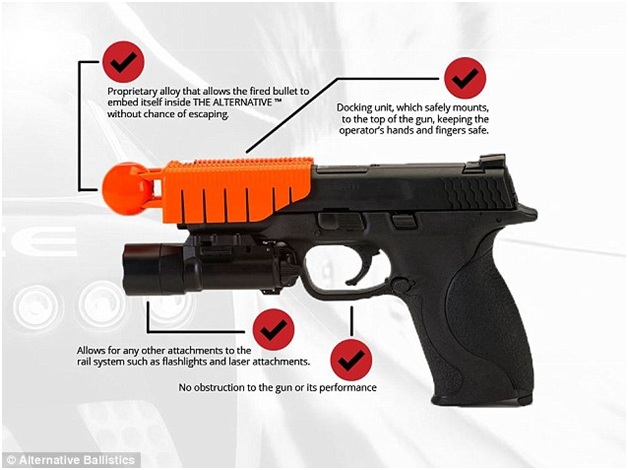Non-lethal weaponry has been used since the dawn of history, but methods and protocols for employing it have gotten far more precise and professional. So too has the weaponry itself. Non-lethal weapons are now safer and more effective than at any time in the past, ensuring that police and paramilitary forces respect the civil rights of protesters and criminal suspects while neutralizing any threats to the public and themselves.
Image Credit
Here are five popular pieces of non-lethal weaponry that have proven effective at deterring crime and protecting the public interest.
- Rubber Bullets and Shot
Rubber bullets and buckshot are projectiles designed to inflict pain and/or stun their targets. Though they’re not likely to cause serious harm, they’re typically aimed at non-vital parts of the body in an effort to minimize unintended consequences. In most cases, rubber bullets cause little more than superficial skin wounds and localized soreness. That said, it’s very difficult for crowds to sustain volleys of these projectiles without breaking up.
- Water Cannons
Water cannons are similar to fire hoses or pressure washers, though their spray is more controlled and less likely to cause acute injury. In most cases, spray is applied as a steady stream, though pulsing blasts have proven effective as well. Depending on the strength and duration of the spray, water cannons can knock protesters off their feet and make advances difficult. However, these deterrents are usually used in concert with other methods, including acoustic devices.
- Acoustic and Odor Devices
Acoustic devices come in many different forms. Some emit high-pitched noises that cause physical pain, while others focus on the lower end of the spectrum and create dissonant sounds that promote hard-to-describe discomfort. Likewise, odor devices emit foul-smelling gases or sprays that make normal activity extremely difficult. Such sprays typically mimic the smell of rotting meat or garbage and can cause physical reactions, such as tearing and vomiting.
- Pepper Spray and Tear Gas
Pepper spray packages the active ingredient in hot peppers and delivers it in a hard-to-wash, concentrated form. Though pepper spray is an effective deterrent, it can be harmful when applied directly to the eyes and has been known to cause respiratory distress in people with asthma and other conditions. As such, law enforcement agencies are typically required to follow strict protocols when using this deterrent. Tear gas, which evokes a similar physical response and is generally preferred for dealing with large crowds, has similar usage restrictions.
- Anti-Vehicle Weapons
Some protests and riots involve hostile vehicles that attempt to ram police lines or endanger innocent civilians. Although some such situations require the use of deadly force, non-lethal deterrence is often a first step. Popular anti-vehicle weapons include spike strips that can destroy tires within seconds and caltrops, or “spike balls” that embed in tires and make it difficult or impossible for vehicles to advance. Traditional barricades, such as concrete highway barriers, can be effective as well.








